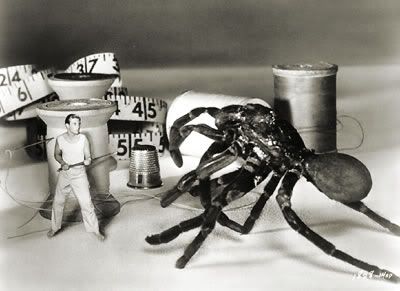
By THOMAS WAGNER, Associated Press Writer
LONDON - This was a bug you couldn't swat and definitely couldn't step on. British scientists have stumbled across a fossilized claw, part of an ancient sea scorpion, that is of such large proportion it would make the entire creature the biggest bug ever.
How big? Bigger than you, and at 8 feet long as big as some Smart cars.
The discovery in 390-million-year-old rocks suggests that spiders, insects, crabs and similar creatures were far larger in the past than previously thought, said Simon Braddy, a University of Bristol paleontologist and one of the study's three authors.
"This is an amazing discovery," he said Tuesday.
"We have known for some time that the fossil record yields monster millipedes, super-sized scorpions, colossal cockroaches, and jumbo dragonflies. But we never realized until now just how big some of these ancient creepy-crawlies were," he said.
The research found a type of sea scorpion that was almost half a yard longer than previous estimates and the largest one ever to have evolved.
The study, published online Tuesday in the Royal Society's journal Biology Letters, means that before this sea scorpion became extinct it was much longer than today's average man is tall.
Prof. Jeorg W. Schneider, a paleontologist at Freiberg Mining Academy in southeastern Germany, said the study provides valuable new information about "the last of the giant scorpions."
Schneider, who was not involved in the study, said these scorpions "were dominant for millions of years because they didn't have natural enemies. Eventually they were wiped out by large fish with jaws and teeth."
Braddy's partner paleontologist Markus Poschmann found the claw fossil several years ago in a quarry near Prum, Germany, that probably had once been an ancient estuary or swamp.
"I was loosening pieces of rock with a hammer and chisel when I suddenly realized there was a dark patch of organic matter on a freshly removed slab. After some cleaning I could identify this as a small part of a large claw," said Poschmann, another author of the study.
"Although I did not know if it was more complete or not, I decided to try and get it out. The pieces had to be cleaned separately, dried, and then glued back together. It was then put into a white plaster jacket to stabilize it," he said.
Eurypterids, or ancient sea scorpions, are believed to be the extinct aquatic ancestors of today's scorpions and possibly all arachnids, a class of joint-legged, invertebrate animals, including spiders, scorpions, mites and ticks.
Braddy said the fossil was from a Jaekelopterus Rhenaniae, a kind of scorpion that lived only in Germany for about 10 million years, about 400 million years ago.
He said some geologists believe that gigantic sea scorpions evolved due to higher levels of oxygen in the atmosphere in the past. Others suspect they evolved in an "arms race" alongside their likely prey, fish that had armor on their outer bodies.
Braddy said the sea scorpions also were cannibals that fought and ate one other, so it helped to be as big as they could be.
"The competition between this scorpion and its prey was probably like a nuclear standoff, an effort to have the biggest weapon," he said. "Hundreds of millions of years ago, these sea scorpions had the upper hand over vertebrates backboned animals like ourselves."
That competition ended long ago.
But the next time you swat a fly, or squish a spider at home, Braddy said, try to "think about the insects that lived long ago. You wouldn't want to swat one of those."